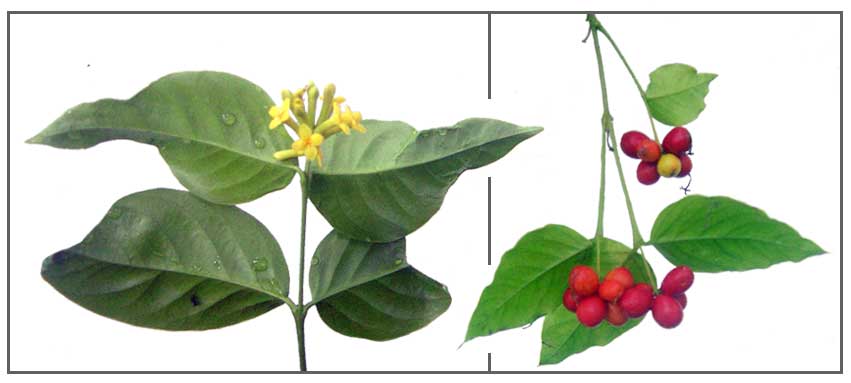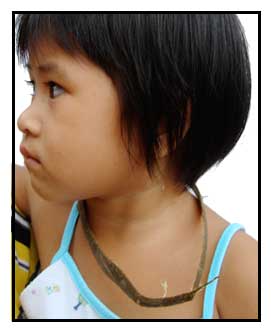| 
General info
- Wikstroemia is a genus of 93 species of flowering shrubs and small trees in the mezereon family, Thymelaeaceae.
-
Etymology: The genus Wikstroemia honors Johan Emanuel Wikstrom (1789-1856), a Swedish botanist and author of several papers on Thymelaeaceae. The specific epithet ovata derives from Latin, meaning "egg-shaped", referring to the shape of the leaves.
 Botany Botany
• Salago is a shrub with a tough bark,
growing to a height of 1 to 3 meters. Leaves are opposite, ovate, 5
to 10 centimeters long, 3 to 4 centimeters wide, pointed at the apex, rounded at the base.
Flowers are yellow, tubular, about 1.5 centimeters long, borne in small clusters. Fruit
is subglobose, 5 to 8 millimeters thick, shining, and yellowish-red, containing a
solitary large seed enclosed by a fleshy skin.
Distribution
- Native to the Philippines. (5)
-
In thickets and
primary or secondary forests, at low and medium altitudes in Bontoc, Benguet, Bulacan, Bataan, Rizal, Laguna, Batangas, and Sorsogon Provinces in Luzon, and in Negros and Mindanao.
- Also native to Borneo. (5)
Parts
utilized
Leaves, bark.
Constituents
- The leaves yield a volatile oil and resin.
- Studies have yielded glucosides, saponins, and the absence of alkaloids or cynogenetic substances.
Properties
- Leaves considered emeto-cathartic and laxative.
- Study suggested cathartic properties.
Uses
Folkloric
- Chewing and swallowing
one or two leaves provide a laxative and purgative effect, three to
four leaves result in drastic watery stools. Pills made from leaf extracts may be used in lieu of imported cathartic pills.
- Fresh bark or branches of the plant are tied about the neck
for mumps and to relieve bronchial catarrh. (Photo Insert)
Others
• Fiber: Source of
durable fiber. Stem can be made into ropes by pounding the wet bark;
also used for making G-strings and tapis.
• Paper: Also used as fiber constituent to strengthen paper products. Fibers extracted from the bark are used in the manufacture
of high grade paper used in bank notes, cheques, and specialty papers
requiring strength and durability. Four species of its genus known for
its quality fibers are: small leaf salago (W. indica), lance leaf (W.
lanceolata), large leaf salago (W. meyeniana) and round leaf salago
(W. ovata). (3)
Studies
• Chemotaxonomy:
Study divides the species into two groups based on morphological characteristics:
length of petioles, leaves and shape of the fruit with no differences
in sex, location and location time. (1)
• Cathartic Effects:
Therapeutic cathartic effects were set between one to four leaves. Effects were intensified in two to three hours, subsiding in 10 to 16 hours. Undesirable side effects of abdominal pain and tenesmus were not significantly mitigated by therapeutic doses of belladona. (4)
• Effect of NaOH Treatment on Mechanical Properties of Fiber:
Study showed treatment of Salago fiber with 5 wt % NaOH increased the density and improved the mechanical properties of the fiber (Pouriman et al, 2016) (6)
Availability
Wildcrafted.
|



 Botany
Botany

